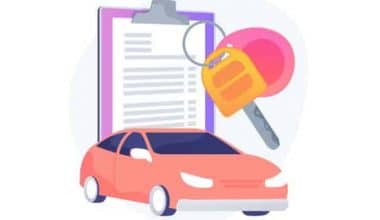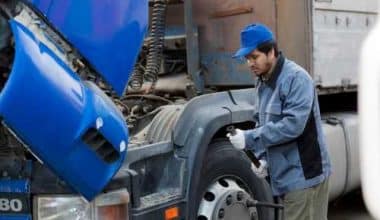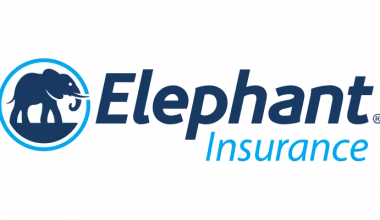Gap insurance is a type of insurance coverage that protects vehicle owners from financial loss in the event of a total loss accident or theft. While gap insurance provides valuable protection in certain circumstances, sometimes the coverage may not pay out. For this reason, this article explains the circumstances in which gap insurance may not provide the financial support you might expect, including the claims process, know whether you have it, and more. Understanding these limitations can help you know whether or not this insurance is necessary for your situation. So, continue reading for more information!
What Is Gap Insurance?
Gap insurance is a type of auto insurance that provides coverage for the difference, or “gap,” between the amount owed on a car loan or lease and the actual cash value of the vehicle. This insurance is especially beneficial for drivers who have purchased a new vehicle or financed their car with a loan. If an accident or theft where the vehicle is a total loss, regular auto insurance policies typically only cover the actual cash value of the car. This can be significantly lower than the outstanding loan balance. Moreover, this coverage helps to bridge this gap and ensures you don’t have a financial burden.
One advantage of having this insurance is that it provides peace of mind to car owners. By having this coverage, you can be confident it protects you against losses related to your car’s value. It can also be quite affordable, with premiums often being a fraction of the cost of regular auto insurance. Additionally, lenders may require borrowers to have gap insurance to protect the borrower and the lender’s interests. Overall, having gap coverage is good for anyone who has financed or leased a vehicle. It offers financial security and protection from unexpected car depreciation or loss.
When Does Gap Insurance Not Pay?
While gap insurance provides additional financial protection, there are certain situations where it may not pay. One of the instances where gap insurance does not pay is when the car’s depreciation is higher than the loan payoff amount. If the car’s value decreases faster than the loan balance decreases, the gap insurance may not cover the whole amount. That’s leaving you responsible for the remaining balance. Additionally, if the car’s loan is paid off, the insurance is no longer necessary. In this situation, you should cancel the gap insurance to avoid unnecessary expenses.
Another scenario where gap insurance may not pay is if there is a failure to maintain proper insurance coverage on the vehicle. Most gap policies require you to maintain comprehensive and collision coverage on your car coverage policy. If you fail to maintain this coverage or let the insurance policy lapse, the gap insurance may not pay in the event of a total loss or theft. Therefore, keep your car insurance coverage to ensure the gap insurance will pay in case of a claim.
Gap Insurance Claims Process
The claims process for gap insurance is relatively straightforward.
- Firstly, file a claim with your primary auto insurance company and receive a settlement for your vehicle’s actual cash value.
- After determining this amount, then submit a claim to your gap insurance provider. They will review your primary insurance company’s settlement and compare it to the outstanding balance on your auto loan or lease. If there is a gap between the settlement amount and your remaining balance, the insurance company will typically cover the difference, up to the policy limit.
- To submit a gap insurance claim, you will typically provide documentation. This includes a copy of your primary insurance’s total loss settlement, the loan or lease agreement, and proof of purchase. Also, it includes any other supporting documentation your gap insurance provider may request.
- After submitting your gap insurance claim with all the documentation, the claims process usually moves relatively quickly. The gap insurance company will review your claim and may request additional information if needed.
- After the claim’s approval, they will issue a payment to your auto finance company or leaseholder to cover the remaining balance on your vehicle.
Note that gap insurance claims are typically only paid out if the vehicle is declared a total loss. If your vehicle is repaired and not a total loss, you will not claim on your gap insurance policy. Overall, the gap insurance claims process gives financial protection in the event of a total loss. It also ensures you don’t have debt to repay on a vehicle you no longer have.
How Do I Know If I Have Gap Insurance
The first step to know if you have gap is to review your auto insurance policy. Gap insurance is usually a separate line item on your policy, so check if it is in your coverage. If you don’t have a copy of your policy, contact your insurance provider directly and ask them about your coverage. They will be able to confirm whether or not you have the insurance and provide you with any additional information you may need.
Alternatively, check your loan or lease documents. Typically, lenders and leasing companies require borrowers to have gap insurance as part of their loan or lease agreement. So, if you see a mention of gap coverage in your loan or lease documents, it is likely you already have it. However, different lenders or leasing companies may have requirements, so verify with them directly.
Why Would A Gap Claim Be Denied?
One of the most common reasons is if the policyholder fails to pay the required premiums on time. Insurance providers have strict rules and guidelines regarding premium payments, and if you fall behind or fail to make the payments, they may deny your claim.
Another reason can be the failure to meet the specific policy requirements. Typically, this insurance covers the difference between the actual cash value of a vehicle and the amount owed on the loan or lease. However, if your vehicle is not eligible for the coverage, the claim will be denied.
What Would Cause Gap Insurance To Not Cover?
Gap insurance may not cover if the policyholder does not have comprehensive or collision coverage on their car policy. This insurance is typically an add-on to an existing car insurance policy, and if you do not have comprehensive or collision coverage, the gap coverage may not be able to kick in and cover the remaining loan balance.
Additionally, the insurance may not cover if the loan amount exceeds a certain limit. Many gap policies have a maximum coverage limit. This means if the loan amount exceeds that limit, you may be responsible for paying the difference.
Will Gap Insurance Pay Off My Loan?
If your car is totaled or stolen, gap insurance will typically pay the difference between the insurance settlement and the remaining balance on your loan. Therefore, gap coverage can help pay off your loan if your car is a total loss.
Notably, this coverage doesn’t cover other expenses related to your car, such as repairs or maintenance costs. Its primary function is to protect your financial investment if your car damages. Moreover, this coverage is optional, but it can be a wise choice if you have a loan balance or lease a vehicle.
Does Gap Have A Limit?
While a gap can be a valuable addition to your car coverage policy, it has certain limitations. One such limitation is that it typically only covers the difference between the outstanding loan amount or lease balance and the actual cash value of the vehicle at the time of the loss. So, if the actual cash value of the vehicle is equal to or exceeds the loan or lease balance, then gap may not provide any additional coverage. Additionally, the insurance may have a limit on the maximum amount it will pay out. This often depends on the insurance company or the terms of the policy.
What Is A Gap Exception?
A gap exception is when an insurance payor covers an out-of-network provider at an in-network rate.
Does Gap Insurance Cover Blown Engine?
Gap insurance does not cover a blown engine. This is because a blown engine is a mechanical breakdown, usually excluded from gap policies. Notably, gap coverage primarily covers damage resulting from an accident or theft, rather than mechanical failures or regular wear and tear issues.
Is Gap Insurance Pointless?
Gap insurance is not pointless. One of the main reasons gap coverage is not pointless is that cars depreciate rapidly in value. In the first few years of ownership, a vehicle’s value can decrease significantly. If an accident occurs during this period and the car is declared a total loss, the insurance payout may not be enough to cover the outstanding loan balance. Hence, this insurance steps in to cover this shortfall. That’s providing financial protection and relieving car owners from being burdened with a loan for a car they can no longer use. Ultimately, while gap coverage may not be necessary for all car owners, it is certainly a worthwhile consideration for those with high-value vehicles or sizable loans.
What Is The Most Gap Insurance Will Pay?
The maximum gap insurance will pay is typically the full amount left on your loan or lease balance. It ensures you are not left financially burdened in case of an unfortunate incident. By covering the remaining balance on your loan or lease, the insurance offers peace of mind to vehicle owners.
In case of theft, accident, or total loss, your standard auto insurance may only cover the current market value of your vehicle. However, this amount may fall short of what you owe on your loan or lease. Gap bridges this difference, ensuring you are not stuck paying for a vehicle you no longer have. However, understand the terms and conditions of your gap insurance policy to determine the maximum amount it will cover. This is because it may vary depending on the provider and the policy terms.
What Are The Pros And Cons Of Gap Insurance?
One of the main advantages is that it offers financial protection in a total loss due to theft or collision. Since a new car can rapidly depreciate soon after purchase, gap coverage can prevent car owners from having to continue making payments on a vehicle they no longer possess. Hence, this coverage can be beneficial for individuals who have financed their vehicle with a low down payment or have a long-term lease.
However, there are also some drawbacks to gap insurance. Firstly, it is an additional cost that needs to be factored into the overall car expenses. This can increase the monthly premium and potentially make car ownership more expensive. Additionally, it may not be necessary for those who make a substantial down payment or purchase a vehicle that holds its value well over time. Furthermore, it does not cover extras such as deductibles, late fees, or unpaid loans or leases. These can add to an individual’s financial burden in case of a total loss.
Conclusion
Gap insurance is a valuable form of coverage that can protect car owners from the financial burden of a total loss. However, know the situations where it may not provide the necessary coverage. By being well-informed and taking appropriate measures to maintain comprehensive insurance coverage, you can get adequate protection in all circumstances.





